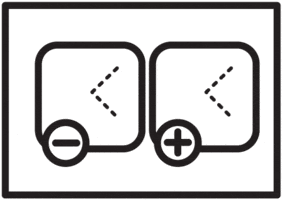Addition and Subtraction Between Whole Numbers And Mixed Numbers Worksheets
You will use types of operations all the time when you are working with measurements that are in the standard Imperial system. Have you used a tape measure in the United States lately? Then you have had to process calculations just like this. The addition operations is not that difficult, but depending on the arrangement of the subtrahend and minuend subtraction can be a more difficult operation to process. Since it requires two steps. These worksheets and lessons show students how to perform operations between mixed numbers, whole numbers, and improper fractions.
Aligned Standard: 5.NF.A.1
- Subtracting Whole Numbers by Mixed Numbers Lesson- Let's walk through the more difficult skill in this area.
- Guided Lesson - We go over all of the different variations you will see in sums and differences.
- Guided Lesson Explanation - Sorry, I just couldn't get it to be less than two pages.
- Addition Practice Worksheet - We are entirely focused on sums here. This is the starter task for this section.
- Subtraction Practice Worksheet - The integer use is pretty fluidly used here.
- Answer Keys - These are for all the unlocked materials above.
Addition Practice Sheets
More sums for you to build up your skills or review with.
- Sheet 2 - Learn to add whole numbers and mixed numbers.
- Sheet 3 - Take two of the above worksheet.
- Worksheet 4 - When adding a mixed number to a whole number, we just add the whole number pieces together.
Subtraction Practice Worksheets
These take almost 3 times longer than the addition sheets.
- Practice 2 - The fraction portion of the mixed number is left as is.
- Practice 3 - Get both numbers in the same format.
- Practice 4 - Writing the problem vertically can really help in some situations.
Mixed Skills
These include all the varieties of the problems on 1 sheet.
Basic Operations with Whole Numbers by Mixed Numbers

This is pretty easy. Mixed numbers are a mixture of whole numbers and a fraction. Some when we are adding these values to a whole number, all we need to worry about is the whole numbers, the fractional portion remains the same. Here is an example:
8 ⅔ + 6 = 14 ⅔
Subtraction follows the same flow when you are subtracting a whole number from a mixed number. Have a look with this example:
24 ¾ - 15 = 9 ⅔
How Do You Subtract Whole Numbers by Mixed Numbers?
We all know how to add and subtract two or whole numbers. Moreover, we also have a strong concept to add and subtract fractions. But what if you have to subtract a whole number from a mixed number or vice versa? Mixed numbers or fractions are where many students may find complexity. Mixed numbers are simply improper fractions, written in a different form. You do not have to freak out about it.
Subtracting a whole number from a mixed number is simple. Here is an example that will help you understand exactly how to proceed in a situation where you have to subtract a whole number from a mixed number.
Example: Subtract 5 ½ from 9.
As an equation this would be stated as: 9 - 5 ½ =
We need to remember that a whole represents a value that has an equal number as the numerator and denominator. Those values can be what ever you need them to be as long as they are the same. 1,237/1,237 is equivalent to 4/4.
Just a quick refresher on the vocabulary associated with subtraction, to make sure we are on the same page. The minuend is the value that we are taking away from. The subtrahend is the value we are removing from the minuend. This can be stated as: Minuend – Subtrahend = Difference
To progress with this problem, we will just need to convert the minuend (9) into a mixed number as well. Since the denominator of the subtrahend is 2, we will need to generate a matching denominator. So we should convert 9 to 8 2/2. We can now restate this problem as:
8 2/2 - 5 ½ =
To proceed we would find the differences between the whole numbers and then the fractions.
Whole Numbers: 8 - 5 = 3
Fractions: 2/2 - ½ = ½
So, our final difference is: 3 ½